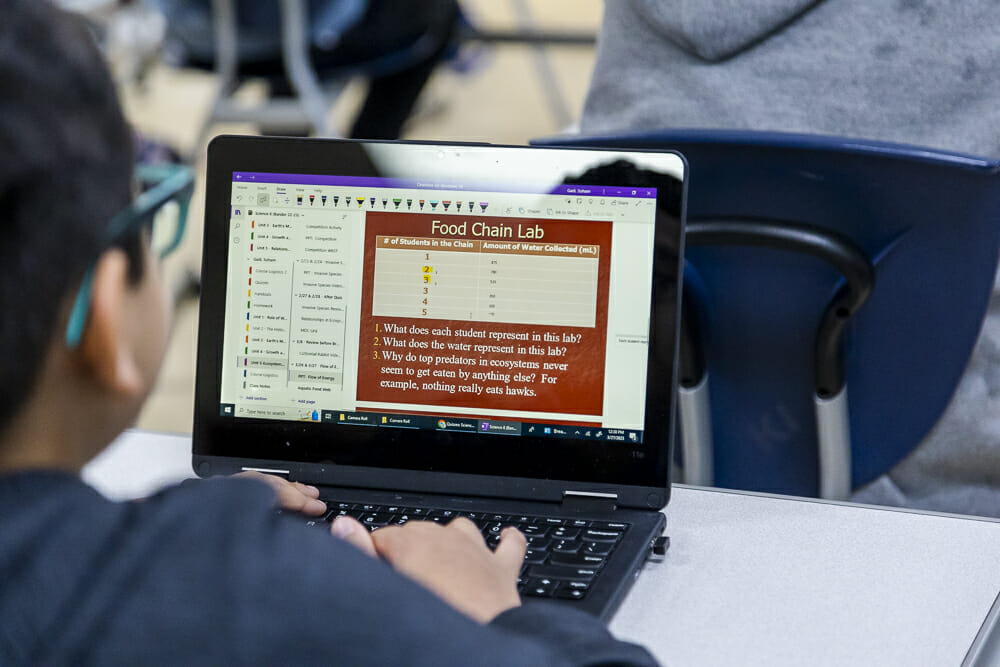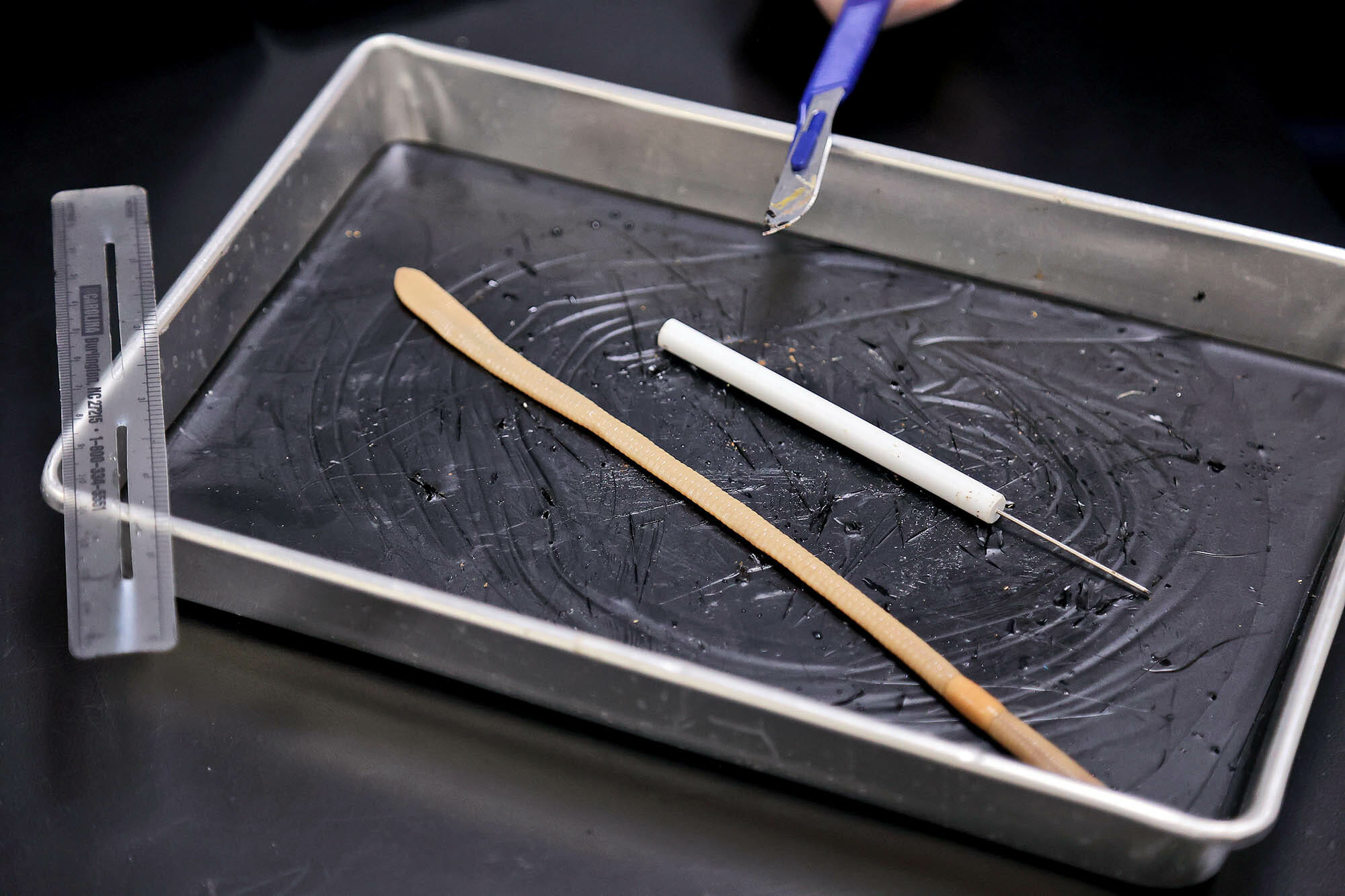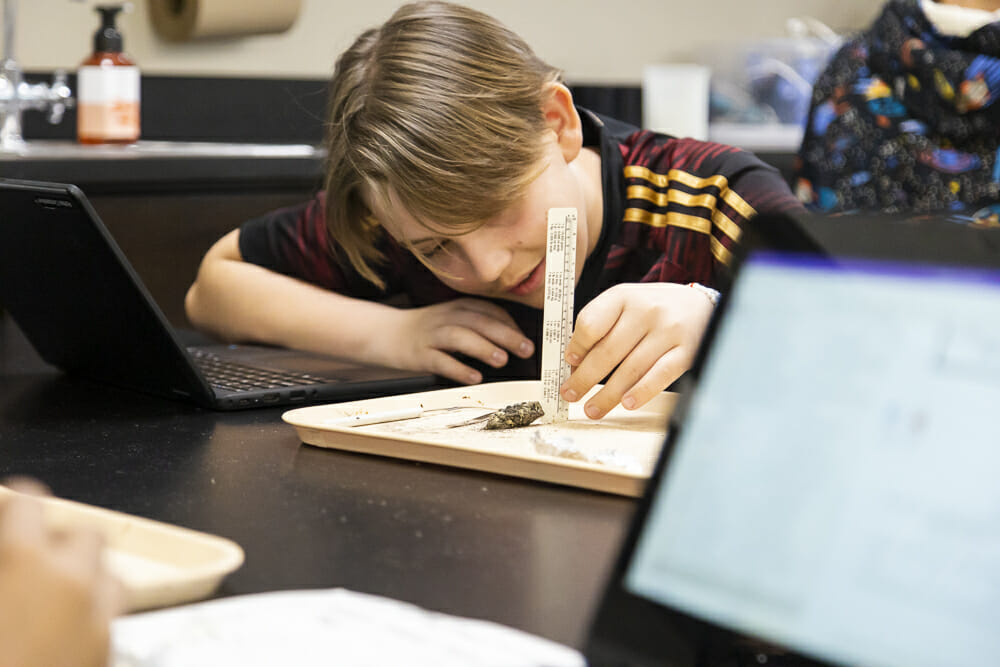Written by William Bander, Middle School Science Teacher
MICDS students have a lot of energy, but where does it all come from? In the sixth-grade science classroom, students learn that their energy comes from the sun. They don’t photosynthesize like plants, but they do eat plants and, in many cases, the animals that eat them.
This week, students studied the flow of energy and matter through ecosystems with various labs and hands-on activities, including one that involved using some of their own energy on the front lawn of the Middle School! Provided with a cup detailing a different living organism on the side, students organized themselves into a food chain hierarchy depending on the plant or animal cup they received.
Energy Matters
Producers are organisms in the food chains that get their energy from non-living sources. Since plants get their energy from the sun, students with a plant got to go first. Students dipped their cups into buckets of water, carrying them to the next link in the food chain.
The herbivores, animals that eat plants, carried the water from the producers to the carnivores. There was just one problem: all cups had holes in the bottom. So the water, representing energy, was lost as one living thing ‘consumed’ another living thing.
When the last student in each food chain dumped whatever remained of their water into an empty bucket, the results were clear. The longer the food chain, the less energy there is to sustain the final population of animals. This is why food chains are not infinitely long; and why top-level predators like lions, tigers, and bears (oh my!) are not used as food sources like cows, sheep, and pigs. After discussing the activity’s results, students concluded that you could feed many more people with crops than you could with animals. It gave the students a whole new perspective on plant-based ‘burgers’ and how their lunch choices impact hunger in America.
While energy is lost in food chains, matter (like toxins and pollutants) can build up to higher concentrations. This is because an herbivore will not eat just one plant, nor will a carnivore eat just one prey animal. Again, students modeled this process, known as biomagnification, using gravel instead of water. While the water leaked out of the cups, the gravel stayed put.
Students with wheat labels on their cups only received a tiny amount of gravel. But after passing their gravel to mice, weasels, and finally, to a red-tailed hawk, the student with the hawk had a cup that was nearly full of gravel. Had those rocks been mercury, lead, or the now-banned pesticide DDT, the poor hawk would likely have suffered greatly from the accumulated pollutants. Talk about a toxic relationship!
This activity gave students pause when thinking about the use of pesticides on crops. It also made them rethink eating fish that live high on the food chain. Predatory fish like swordfish and barracuda often have high levels of mercury that make their frequent consumption unsafe for people.
Dissecting the Food Web
Students brought their learning back indoors for two dissection labs that furthered their exploration of food webs. By dissecting an earthworm, students learned about an often-overlooked decomposer vital for recycling soil nutrients. One slice of the worm’s intestine, and the students were able to see how these animals can turn dead buried material into valuable fertilizer. Students also discovered that earthworms are hermaphrodites with both male and female reproductive organs. This doubles their chances of finding a mate and making baby worms, increasing the soil’s fertility for future generations—a welcome thing for any farmer or gardener.
Lilian Huynh ’29 appreciates the fascinating feats of earthworms, but learning about their internal process has some drawbacks. “The thing that I found most enjoyable about our Food Webs unit was the dissection lab. Learning about different parts inside the things we dissect is gripping. The dissection is by far my favorite part because you can see everything you learn about in real life (organs, diet, etc.). Dissecting is one of my favorite labs because you can learn about anatomy. The most challenging thing was touching the worm we dissected and the smell,” she said.
Owl pellets offered another insightful look into the complexity of food webs. Unlike food chains, food webs show that carnivores can eat more than one type of animal. For example, owls eat shrews, moles, birds, and rodents. They can’t digest the bones, fur, or feathers, so they cough them up as golf ball-sized pellets. Students tore into these pellets, searching for undigested bones to identify what kind of animals the owl had for lunch. Like earthworms, farmers love having owls around their land as they keep rodent populations low, minimizing their destructive impact on a farmer’s crop yield. After identifying the prey animals, students did some research with the Missouri Department of Conservation’s online field guides. Finally, they constructed food webs showing how one of the eight owl species native to Missouri acquires energy from various animals; and how those animals acquire energy from even more diverse food sources.
Whether it’s an owl, earthworm, or MICDS student, the energy that drives these organisms, all starts with the sun!













































































